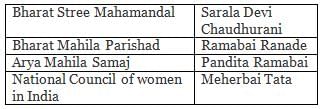Test: History - 10 - UPSC MCQ
25 Questions MCQ Test - Test: History - 10
The rock art of Bhimbetka belong to which of the following periods?
- Upper Palaeolithic
- Mesolithic
- Chalcolithic
Select the correct code:
Consider the following statements about dancing figure of Shiva as Nataraja that was evolved and fully developed during the Chola Period.
- Shiva is balancing himself on his left leg and suppressing the apasmara.
- The main right hand is posed in abhaya hasta
- The upper left hand carries a flame while the main left hand is held in dola hasta and connects with the abhaya hasta of the right hand.
Which of the above statements is/are correct?
| 1 Crore+ students have signed up on EduRev. Have you? Download the App |
Which of the following are Neolithic sites
- Kurnool caves
- Paiyampalli
- Mehrgarh
- Daojali Hading
Select from the codes below
What is/are common to the two historical places known as Ajanta and Mahabalipuram?
- Both were built in the same period.
- Both belong to the same religious denomination.
- Both have rock-cut monuments.
Select the correct answer using the code given below.
Which of the following pairs are correctly matched?

Select the correct code:
The history of the Vakatakas is largely known from inscriptions and texts like the Puranas. They became a major power in which of these regions of India?
Consider the following statements:
- ‘Bijak’ is a composition of the teachings of Saint Dadu Dayal.
- The Philosophy of Pushti Marg was propounded by Madhvacharya.
Which of the statements given above is/are correct?
In the Gupta administration, Sandhivigraha were those officials who
During the reign of Alauddin Khalji
- Land reforms were introduced where taxes were decided on the measurement of land
- Different markets such as those of commodities, slaves and horses were integrated into a single market
Which of the above is/are incorrect?
Which of the following are considered as the Causes for the Failure of Revolt of 1857
- Limited territorial and social base
- Support of certain sections of Indian public to British authorities
- Lack of resources as compared to those of the British
- Lack of a coherent ideology
Select the Correct code:
The revolt of 1857 marks a turning point in the history of India. Which of the following were the consequences of the revolt.
- Company rule was abolished
- British disrespected and neglected the rights of the native princes
- The Indian states were to recognise the paramountcy of the British Crown
Select the correct code:
In 1720, the British government enacted the Calico Act. What is it related to?
The Great Trigonometrical Survey which aimed to measure the entire Indian subcontinent was started by
Which of the following is/are correct about Wood’s Despatch?
- It emphasized on the European learning.
- It argued that literature of the East was full of grave errors
Select the correct answer using the codes below.
Which deity is worshipped in Malinithan temple, Arunachal Pradesh
Which of the following statements is/are correct?
- Angkorwat temple is a Shaivite temple.
- It is constructed in Dravidian style.
Select the correct answer using the codes below.
Which of the following is/are feature/features of Swadeshi movement?
- Emphasis on self-reliance
- Extensive participation of the peasantry
- Cultural revivalism
Select the correct code:
Consider the following statements
- The first session of Indian National Congress was presided by W.C Banerjee.
- Kamaladevi Chattopadhyay addressed the session in 1885.
Which of the above statement is/are NOT correct?
Consider the following statements
- Servants of Indian Society was founded by Gopal Krishna Gokhale.
- Sudharak was the periodical which projected the views of the Society
- Gopal Ganesh Agarkar started the periodical Sudharak
Which of the above statements is /are correct?




















